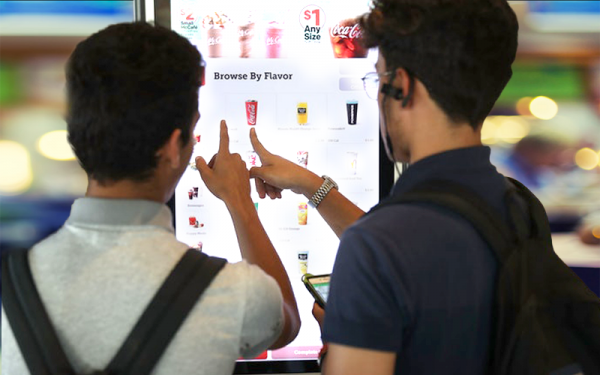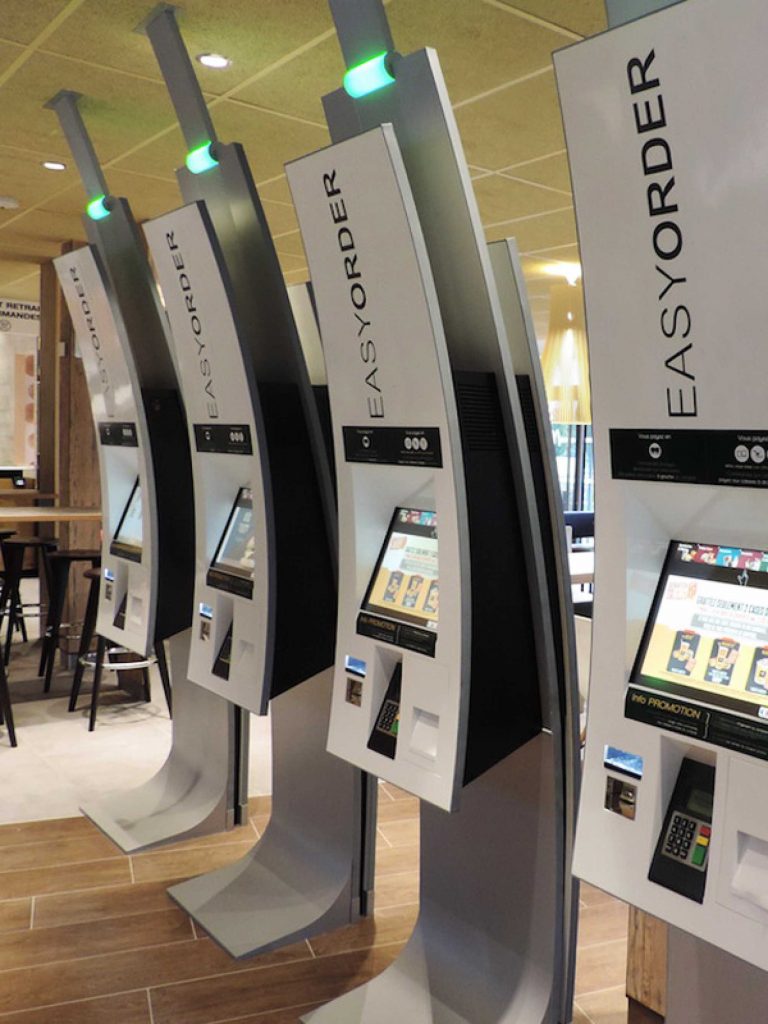by Steve Hanrahan – Business Development Manager
If you live in a city of any considerable size, then by now you’ve probably seen self-serve kiosks begin to pop up in restaurants and retail locations. After seeing major chains implement this new technology with much success, now you might be considering whether self-serve kiosks make sense for your business, too.
What can kiosks do?
Using kiosks can make sense for a lot of businesses. Self-checkout lanes in grocery stores, for example, reduce the need to have staff there simply to scan barcodes and process payments. With a self-serve lane, customers can do that for themselves while employees focus on service and stock management.
Fast food restaurants like McDonald’s are now also using kiosks to take customer orders, and other examples include sushi restaurants using POS tablets to essentially create mini-kiosks at each table.
Other companies don’t use their kiosks for financial transactions, but for managing their gift registries for bridal or baby showers.
Kiosks are also becoming increasingly common in movie theaters, arcades, and bus terminals. There are undoubtedly many creative uses for kiosks that have yet to be implemented.
Why use kiosks?
One great reason to add the use of kiosks to your business is that customers seem to spend more money while using them. Taco Bell (which operates KFC and Pizza Hut in Europe) has confirmed that orders placed using their digital app are twenty percent higher than those placed with a human cashier. This is an especially big win for restaurants. The psychology suggests that people might be too embarrassed to order five beef burritos for themselves when faced with a traditional checkout counter, but are more likely to indulge themselves when faced with an impersonal machine to take their order instead.
Lower wait times are another great benefit. Your restaurant only has so many staff members, but allowing customers to place their orders frees up more time for food preparation and other tasks.
Orders placed on kiosks also boast higher accuracy and more customization options. A lot can go wrong when a cashier has to communicate with a customer and manually enter their order into the system and allowing the customer to directly order themselves helps mitigate errors.
Downsides
While kiosks are perfect for many retail transactions that don’t need a personal touch, some types of businesses that focus on customer interaction won’t be adding them anytime soon. Places that place a heavy emphasis on sales such as electronics or furniture stores require too much human interaction for kiosks to be a practical solution.
Even if these machines seem like a great fit for your store, there are still some negative factors to consider.
Self-serve kiosks attract controversy over the issue of whether they make low-skilled workers obsolete. Depending on your customer base, you may face a severe backlash because of this. Some customers may also struggle with the new technology and require help to complete transactions for the first time, placing an additional burden on the remaining staff.
Maintenance is also a major factor to consider. The money you save on labour will likely go into ensuring your kiosk hardware remain up and running. Being online 24/7 and processing thousands of transactions per day can put a real strain on these machines. You’ve probably seen in your local McDonald’s restaurant that at least one machine seems to be perpetually out of service.
Some people will just always appreciate the human aspect as well. For some of us, we might not like talking to anyone first thing in the morning and could appreciate getting our coffee from a machine, but others still prefer to receive their order with a smile.





